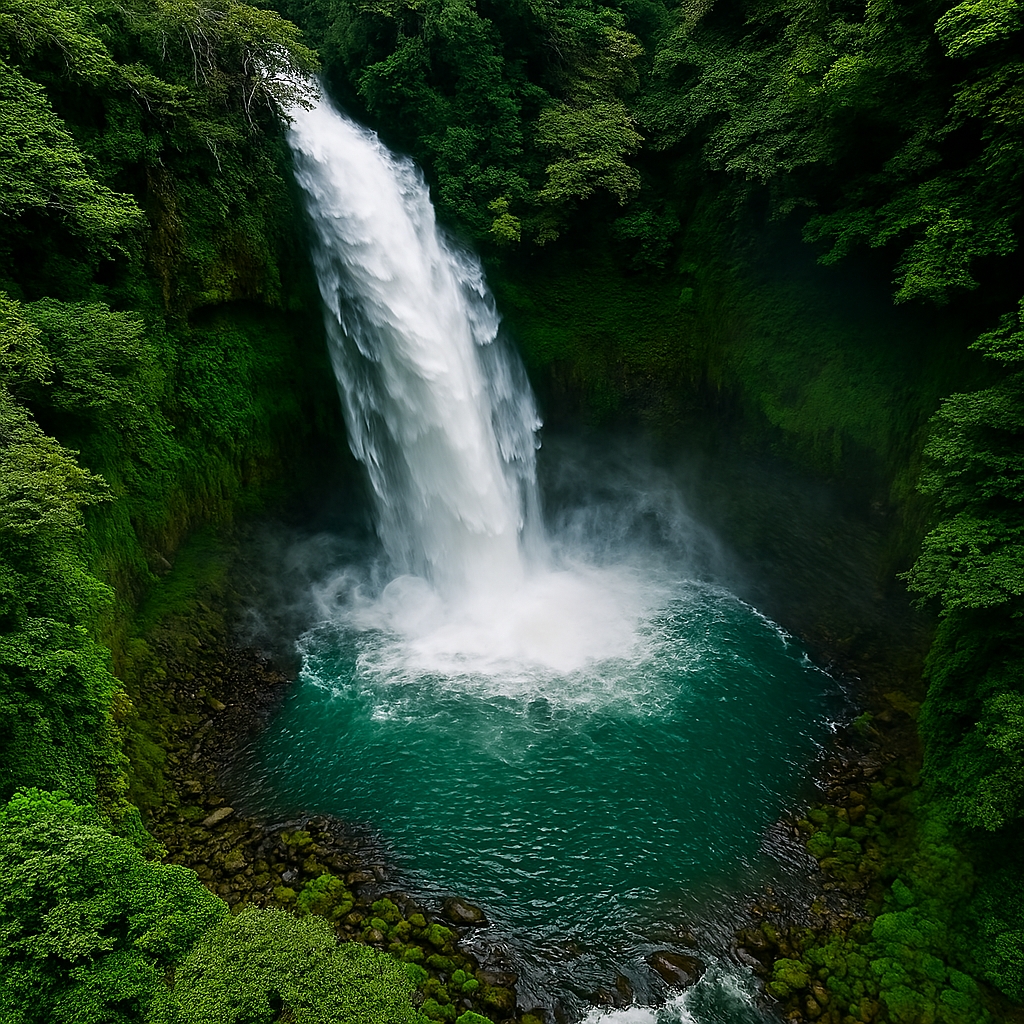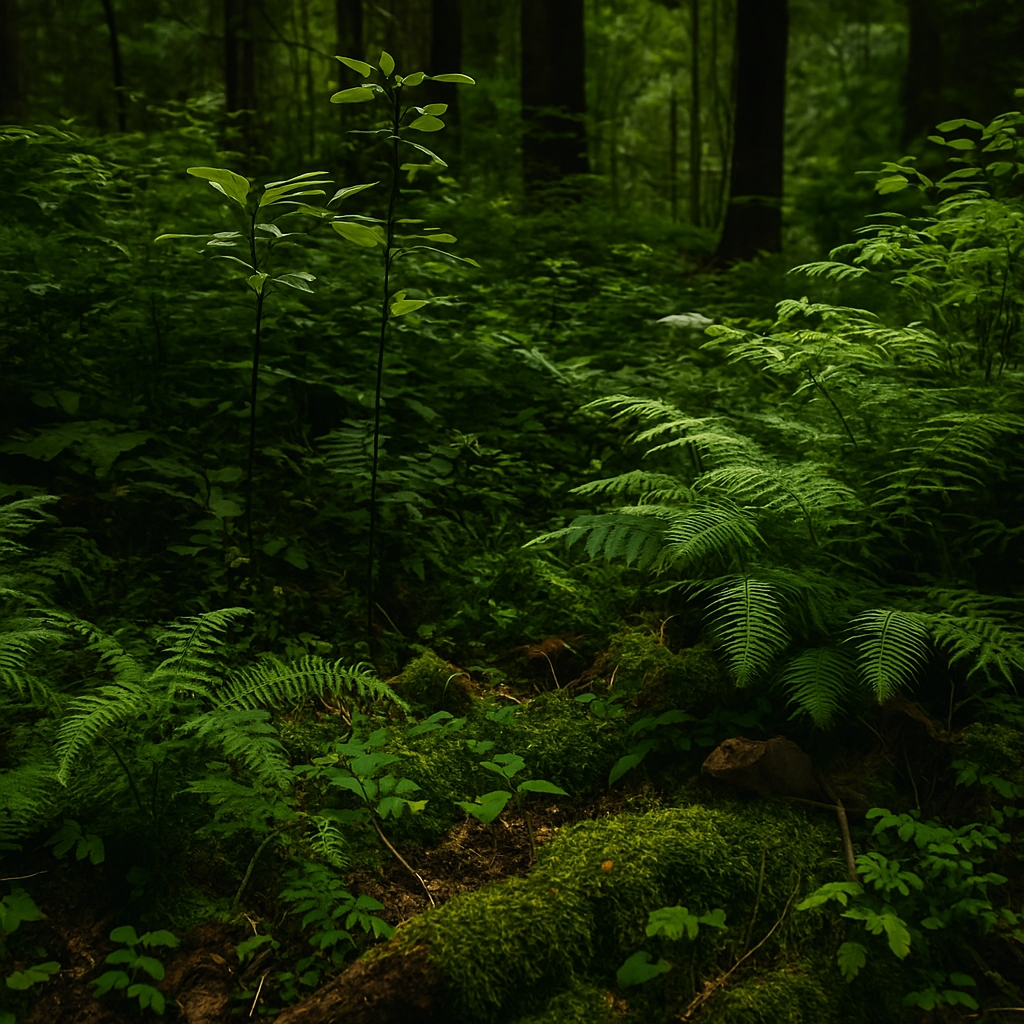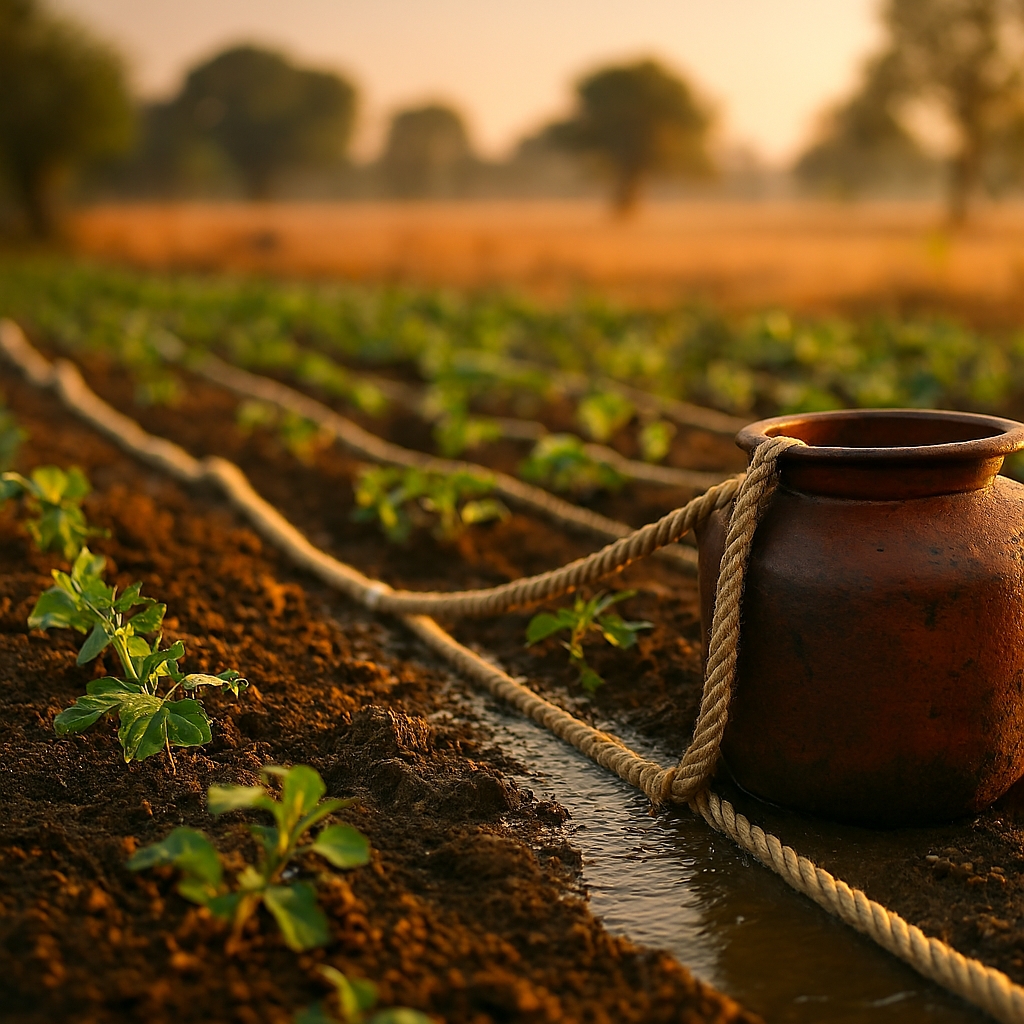Amazing Waterfall Environments And Ecology – The Flow Of Life
Waterfalls are not only breathtaking natural wonders but also powerful ecological systems that sustain life. Their cascading waters shape landscapes, regulate climates, and nurture biodiversity. They act as natural oxygenators, geological sculptors, and cultural symbols, weaving together science and tradition.
Waterfalls As Natural Oxygenators
Waterfalls enrich water with oxygen through turbulence, supporting aquatic species and preventing stagnation. This oxygenation is vital for fish, amphibians, and microorganisms that depend on clean, oxygen-rich habitats. The constant churning of water reduces harmful bacteria and algae growth, stabilizing ecosystems. Riparian vegetation thrives in these conditions, strengthening food chains. Oxygen-rich waters also enhance resilience against pollution. Communities benefit from cleaner water supplies downstream. The process is entirely natural, requiring no human intervention. This makes waterfalls essential for maintaining ecological balance. Their role as oxygenators highlights their unseen but critical contribution to life.
| Function | Ecological Benefit | Example |
|---|---|---|
| Oxygenation | Supports aquatic species | Salmon habitats |
| Turbulence | Reduces harmful bacteria | Freshwater streams |
| Nutrient Cycling | Strengthens vegetation | Riverbank ecosystems |
| Biodiversity | Expands niches | Amphibian breeding grounds |

Waterfalls As Climate Regulators
The mist produced by waterfalls influences local humidity, creating microclimates that sustain lush vegetation. This moisture supports rainforests and stabilizes temperatures, offering refuge for species during heatwaves. Waterfalls act as natural humidifiers, sustaining delicate ecosystems. Their cooling effect reduces drought impacts. Mist zones encourage cloud formation, contributing to rainfall cycles. These microclimates protect biodiversity against climate extremes. Communities near waterfalls often benefit from stable weather patterns. The cooling spray provides relief for both wildlife and humans. Waterfalls therefore act as climate stabilizers. Their ecological role extends far beyond their immediate surroundings.
- Mist increases humidity and supports rainforest growth
- Cooling effect stabilizes local temperatures
- Provides refuge for heat-sensitive species
- Enhances soil moisture retention
- Promotes cloud formation in certain regions
Waterfalls As Geological Sculptors
Over centuries, waterfalls carve valleys, gorges, and canyons, shaping landscapes with erosive power. Their hydraulic action exposes rock layers, revealing geological history. Sediment transport enriches downstream soils, supporting agriculture. Plunge pools form unique habitats for specialized species. Waterfalls demonstrate the dynamic and ever changing relationship between powerful water and solid rock. They create dramatic scenery that inspires human culture. Geological formations around waterfalls often become educational resources. These landscapes also provide habitats for diverse species. The sculpting process is continuous, reshaping ecosystems over time. Waterfalls are geological storytellers, recording Earth’s history in stone.
| Geological Feature | Formation Process | Ecological Benefit |
|---|---|---|
| Valleys | Continuous erosion | Expands habitats |
| Gorges | Rock displacement | Reveals geology |
| Plunge Pools | Hydraulic action | Specialized niches |
| Sediment Flow | Downstream transport | Fertile soils |
Waterfalls As Biodiversity Hotspots
Waterfalls create diverse habitats, from mist zones to rocky ledges, supporting unique species. Mosses, ferns, and orchids thrive in shaded, moist conditions. Amphibians flourish in these microhabitats, while birds nest in cliffside crevices. The variety of niches enhances resilience against environmental change. Biodiversity around waterfalls strengthens food webs. These ecosystems act as refuges during climate extremes. Waterfalls provide continuity for species that depend on moisture. Their habitats are often irreplaceable. Conservation of waterfalls ensures preservation of biodiversity. They are living laboratories of ecological richness.
- Mist zones support mosses and ferns
- Rocky ledges provide nesting sites
- Amphibians thrive in moist conditions
- Orchids flourish in shaded areas
- Biodiversity increases ecosystem resilience
Waterfalls As Cultural Symbols
Throughout history, waterfalls have inspired myths, rituals, and art, symbolizing renewal and resilience. Indigenous communities often view them as sacred sites. Their presence fosters tourism, strengthening local economies. Waterfalls embody continuity in cultural traditions. They inspire creativity in literature and painting. Communities gather at waterfalls for rituals and celebrations. Tourism around waterfalls promotes conservation awareness. Sacred symbolism often leads to protective practices. Waterfalls connect culture with ecology. Their role extends beyond nature into human identity.
| Cultural Aspect | Example | Environmental Link |
|---|---|---|
| Sacred Sites | Indigenous rituals | Conservation practices |
| Tourism | Niagara Falls | Economic sustainability |
| Art | Paintings and poetry | Cultural heritage |
| Symbolism | Renewal and resilience | Environmental awareness |
Waterfalls As Freshwater Purifiers
Waterfalls act as natural filters, dispersing organic matter and breaking down sediments. Their turbulence improves water clarity, supporting downstream ecosystems. Clean water is vital for agriculture, drinking supplies, and wildlife survival. The purification process reduces harmful pathogens. Communities benefit from healthier water sources. Aquatic species thrive in cleaner habitats. Waterfalls thus contribute to public health indirectly. Their role in purification is continuous and self-sustaining. This makes them essential for ecological resilience. They are guardians of freshwater quality.
| Purification Role | Ecological Impact | Example |
|---|---|---|
| Sediment Breakdown | Improves clarity | River systems |
| Organic Matter Dispersion | Reduces pathogens | Wetlands |
| Water Quality | Supports agriculture | Irrigation |
| Habitat Health | Strengthens ecosystems | Fish populations |
Waterfalls As Energy Sources
Waterfalls have long been harnessed for energy, from ancient mills to modern hydropower plants. Their kinetic energy provides renewable electricity. This reduces reliance on fossil fuels. Communities benefit from sustainable energy supplies. Hydropower must balance ecological preservation. Large dams can disrupt habitats if poorly managed. Small-scale projects often minimize impact. Waterfalls symbolize the union of nature and technology. Their energy potential is vast yet delicate. Responsible use ensures ecological harmony.
- Provide renewable electricity
- Reduce reliance on fossil fuels
- Support sustainable communities
- Require ecological balance
- Symbolize union of nature and technology
Waterfalls As Soil Enrichers
Sediment carried by waterfalls enriches downstream soils, supporting agriculture and vegetation. Nutrient cycling strengthens food webs. Fertile soils increase resilience against erosion. Communities rely on these soils for crops. Waterfalls thus indirectly support food security. Soil enrichment enhances biodiversity. It stabilizes landscapes against climate change. Sediment flow is continuous and vital. Waterfalls are natural soil engineers. Their contribution sustains both ecosystems and human livelihoods.
| Soil Role | Benefit | Example |
|---|---|---|
| Sediment Transport | Fertile soils | River valleys |
| Nutrient Cycling | Strengthens food webs | Agricultural zones |
| Erosion Control | Stabilizes landscapes | Floodplains |
| Biodiversity Support | Enhances vegetation | Forest edges |
Waterfalls As Wildlife Corridors
Waterfalls connect ecosystems by linking rivers, forests, and wetlands. Migratory species rely on these corridors. Fish use plunge pools as resting zones. Birds follow water paths for food and shelter. Mammals depend on riparian routes. Connectivity strengthens population stability. Corridors reduce isolation of species. Waterfalls thus integrate ecosystems. Their role is vital for migration cycles. They are bridges of biodiversity.
- Connect rivers, forests, and wetlands
- Support migratory species
- Provide resting zones for fish
- Offer food paths for birds
- Strengthen population stability
Waterfalls As Natural Coolants
The spray from waterfalls lowers surrounding temperatures. This cooling effect protects species from heat stress. It stabilizes microclimates, reducing drought impacts. Cool zones act as refuges during climate extremes. Communities benefit from moderated climates. Cooling supports vegetation growth. It enhances resilience against global warming. Waterfalls are natural air conditioners. Their cooling role is subtle yet powerful. They sustain life during heatwaves.
| Cooling Role | Ecological Impact | Example |
|---|---|---|
| Spray Cooling | Protects species | Tropical forests |
| Microclimate Stabilization | Reduces drought | Rainforest zones |
| Refuge Creation | Supports biodiversity | Mist habitats |
| Climate Moderation | Enhances resilience | Local ecosystems |
Waterfalls As Carbon Sinks
Vegetation surrounding waterfalls absorbs carbon dioxide at accelerated rates because the mist and constant moisture create ideal conditions for plant growth, which in turn strengthens the ability of these ecosystems to act as natural carbon sinks. The lush greenery that thrives in these zones not only reduces atmospheric carbon but also stabilizes soils and prevents erosion, ensuring long-term ecological resilience.
These areas often become dense pockets of biodiversity, where mosses, ferns, and flowering plants flourish in ways that would not be possible without the continuous spray of water. By capturing carbon, waterfalls indirectly contribute to slowing climate change, offering a natural solution that requires no human intervention. The constant renewal of vegetation ensures that carbon absorption remains steady over centuries. Communities benefit from the climate regulation provided by these ecosystems, even if they are unaware of the waterfall’s role.
The ecological services offered by waterfalls extend far beyond their immediate surroundings, influencing regional climate patterns. Their contribution to carbon sequestration highlights the interconnectedness of water, air, and plant life. Waterfalls are therefore not only scenic wonders but also vital allies in the global fight against climate instability. Their legacy as carbon sinks is both ecological and cultural, reminding humanity of nature’s capacity for balance.
| Carbon Role | Ecological Impact | Example |
|---|---|---|
| Absorption | Reduces atmospheric CO2 | Rainforest waterfalls |
| Growth | Accelerates vegetation | Moss and ferns |
| Mitigation | Slows climate change | Local ecosystems |
| Stability | Strengthens soils | Cliffside plants |

Waterfalls As Tourism Drivers
Tourism centered around waterfalls generates sustainable income for local communities while simultaneously fostering conservation awareness, as visitors often leave with a deeper appreciation for the natural world. These sites attract millions of travelers annually, creating economic opportunities through hospitality, guiding services, and cultural exchanges. Eco-tourism initiatives emphasize responsible practices, ensuring that the influx of visitors does not harm fragile ecosystems. Waterfalls serve as focal points for regional identity, drawing attention to the importance of preserving landscapes.
The economic benefits extend to infrastructure development, education, and healthcare funded by tourism revenue. Communities often reinvest in conservation projects, protecting the very resources that attract visitors. Waterfalls thus become catalysts for both economic and ecological sustainability. Their grandeur build creativeity in art and photography with storytelling, further embedding them in cultural consciousness. Tourism also encourages international cooperation in conservation, as iconic waterfalls are recognized as global treasures. The balance between economic gain and ecological protection defines the future of waterfall tourism.
- Generate sustainable income for communities
- Foster conservation awareness among visitors
- Create opportunities in hospitality and guiding
- Strengthen regional identity and culture
- Encourage reinvestment in conservation projects
Waterfalls As Educational Resources
Waterfalls function as outdoor classrooms where geology, ecology, and hydrology converge, offering students and researchers living examples of natural processes that textbooks can only describe. The erosive power of waterfalls demonstrates geological history, while the biodiversity surrounding them illustrates ecological complexity. Hydrological cycles are visible in the constant flow, mist, and sediment transport, making waterfalls ideal for teaching water science.
Educational tourism brings learners into direct contact with ecosystems, fostering environmental stewardship. Schools and universities often organize field trips to waterfalls, integrating experiential learning into curricula. These experiences inspire future scientists, conservationists, and policymakers. Waterfalls also provide opportunities for indigenous knowledge sharing, connecting cultural traditions with scientific understanding. The accessibility of waterfalls makes them inclusive educational sites. Their role in education strengthens conservation values across generations. Waterfalls thus serve as bridges between knowledge, culture, and environmental responsibility.
| Educational Aspect | Learning Outcome | Example |
|---|---|---|
| Geology | Rock formation study | Canyon waterfalls |
| Ecology | Biodiversity lessons | Rainforest cascades |
| Hydrology | Water cycle insights | River systems |
| Stewardship | Conservation awareness | Eco-tourism programs |
Waterfalls As Spiritual Retreats
Waterfalls provide adaptable spaces of connection for meditation, reflection, and spiritual renewal or just reconnecting with nature. Communities often gather at waterfalls for rituals, ceremonies, and cultural celebrations, reinforcing their role as sacred sites. The natural rhythm of falling water symbolizes continuity and resilience, inspiring individuals to connect with deeper values.
Spiritual traditions across cultures emphasize the healing power of waterfalls, linking them to purification and renewal. These retreats strengthen conservation values by embedding ecological awareness in cultural practices. Visitors often describe waterfalls as places of transformation, where nature’s energy restores balance. The sensory experience of mist, loud water sounds, and powerful water sight creates profound emotional connections. Waterfalls thus serve as sanctuaries for both individuals and communities. Their spiritual significance enhances their ecological importance, as sacredness often leads to protective practices. Waterfalls embody the union of nature, culture, and spirit.
- Provide spaces for meditation and reflection
- Inspire rituals and cultural celebrations
- Symbolize continuity and resilience
- Strengthen conservation values through sacredness
- Serve as sanctuaries for transformation and renewal
Waterfalls As Habitat Stabilizers
Waterfalls stabilize habitats by regulating water flow, preventing flooding downstream, and sustaining wetlands and forests that depend on consistent moisture. Their controlled flow supports diverse ecosystems, ensuring that species have reliable access to water. Stability enhances resilience against climate extremes, protecting communities and wildlife alike. Wetlands nourished by waterfalls act as breeding grounds for countless species. Forests thrive in the moisture-rich zones created by waterfalls, expanding biodiversity. The regulation of water flow reduces soil erosion, strengthening landscapes. Waterfalls thus act as ecological anchors, holding ecosystems together. Their stabilizing role is continuous, shaping habitats over centuries. Communities benefit from reduced flood risks and improved agricultural conditions. Waterfalls are therefore indispensable for habitat resilience and ecological balance.
| Habitat Role | Benefit | Example |
|---|---|---|
| Flow Control | Prevents flooding | River deltas |
| Wetland Support | Sustains ecosystems | Marshlands |
| Forest Growth | Provides moisture | Tropical forests |
| Climate Resilience | Enhances stability | Diverse habitats |
Waterfalls As Pollination Allies
Waterfalls indirectly support pollination by creating mist zones that attract insects, birds, and other pollinators, which thrive in the moisture-rich environment and contribute to the reproduction of surrounding plants. The constant spray provides hydration for flowering species, ensuring that blossoms remain vibrant and accessible to pollinators throughout the year. Birds drawn to waterfalls often carry pollen across wide distances, strengthening biodiversity in nearby forests and valleys. Insects such as bees and butterflies benefit from the abundance of nectar-rich plants that flourish in waterfall ecosystems.
This pollination cycle enhances food webs, supporting both wildlife and human agriculture. Waterfalls therefore act as unseen allies in sustaining plant reproduction. Their contribution to pollination is subtle yet vital, ensuring ecological continuity. Communities benefit from stronger crop yields due to the pollination services indirectly supported by waterfalls. The interconnectedness of water, plants, and pollinators demonstrates the holistic role waterfalls play in ecology. They are silent partners in the survival of countless species.
| Pollination Role | Ecological Impact | Example |
|---|---|---|
| Mist Attraction | Draws insects and birds | Tropical waterfalls |
| Plant Hydration | Keeps blossoms vibrant | Orchid habitats |
| Bird Movement | Spreads pollen widely | Forest ecosystems |
| Biodiversity | Strengthens food webs | Agricultural zones |
Waterfalls As Natural Boundaries
Waterfalls act as natural borders between ecosystems, separating habitats and reducing competition among species while creating distinct ecological zones that enhance diversity. The physical barrier of cliffs and flowing water prevents certain species from crossing, allowing unique communities to develop on either side. This separation fosters specialized niches, where plants and animals adapt to specific conditions. Boundaries created by waterfalls stabilize ecosystems by limiting overpopulation in shared habitats. They also provide safe refuges for species that require isolation.
Waterfalls thus function as ecological dividers, shaping biodiversity patterns across landscapes. Their role in boundary creation is continuous, influencing species distribution over centuries. Communities often recognize waterfalls as territorial markers, embedding them in cultural traditions. The ecological and cultural significance of boundaries reinforces the importance of waterfalls. They are both natural walls and bridges of diversity.
- Separate habitats and reduce competition
- Foster specialized ecological niches
- Stabilize ecosystems by limiting overpopulation
- Provide refuges for isolated species
- Influence species distribution across landscapes

Waterfalls As Agents Of Renewal
Waterfalls symbolize renewal through their constant flow, reminding communities of resilience and continuity while refreshing habitats and sustaining ecological cycles. The endless movement of water represents nature’s ability to regenerate, even in the face of challenges. Ecologically, waterfalls rejuvenate soils, vegetation, and aquatic systems, ensuring that ecosystems remain vibrant. Their mist nourishes plants, while their flow replenishes rivers and wetlands.
Renewal is not only physical but also cultural, as waterfalls inspire rituals and traditions centered on rebirth. Communities often view waterfalls as sacred sites of cleansing and transformation. This symbolism strengthens conservation values, embedding ecological awareness in cultural identity. Waterfalls thus act as agents of both ecological and spiritual renewal. Their presence ensures continuity for species and societies alike. They embody the perpetual rhythm of life.
| Renewal Aspect | Ecological Impact | Cultural Impact |
|---|---|---|
| Flow Continuity | Refreshes habitats | Symbolizes resilience |
| Mist Nourishment | Sustains vegetation | Inspires rituals |
| Soil Rejuvenation | Strengthens ecosystems | Embeds traditions |
| Aquatic Renewal | Supports rivers | Encourages conservation |
Waterfalls As Ecological Integrators
Waterfalls integrate multiple ecosystems by linking rivers, forests, wetlands, and valleys into cohesive networks that sustain biodiversity. Their flow connects aquatic and terrestrial habitats, ensuring nutrient exchange across landscapes. Migratory species rely on these integrative pathways for survival. Birds, mammals, and amphibians use waterfall zones as resting and feeding grounds. The integration of ecosystems strengthens resilience against climate change. Communities benefit from the interconnectedness of resources, such as water, soil, and vegetation. Waterfalls thus act as ecological hubs, weaving together diverse habitats. Their integrative role ensures that ecosystems do not function in isolation. This interconnectedness highlights the holistic nature of ecology. Waterfalls are bridges of life across landscapes.
- Link rivers, forests, wetlands, and valleys
- Ensure nutrient exchange across habitats
- Support migratory species survival
- Strengthen resilience against climate change
- Act as ecological hubs for biodiversity
Waterfalls As Symbols Of Continuity
Waterfalls embody continuity by flowing endlessly, representing the unbroken cycles of nature that sustain life across generations. Their constant movement reflects resilience, reminding communities of the enduring power of ecosystems. Ecologically, waterfalls sustain water cycles, ensuring rivers remain replenished. They provide stability for species that depend on consistent moisture. Continuity is also cultural, as waterfalls inspire traditions, myths, and rituals that emphasize permanence. Communities often associate waterfalls with timelessness, embedding them in identity and heritage. Their role in continuity strengthens conservation values, as protecting waterfalls means safeguarding ecological and cultural cycles. Waterfalls thus serve as living symbols of permanence. Their flow is a reminder of nature’s unyielding rhythm. They are guardians of both ecological and cultural continuity.
| Continuity Role | Ecological Impact | Cultural Impact |
|---|---|---|
| Endless Flow | Sustains water cycles | Symbolizes resilience |
| Moisture Stability | Supports species | Inspires traditions |
| Ecological Permanence | Strengthens biodiversity | Embeds heritage |
| Cultural Timelessness | Encourages conservation | Reinforces identity |
Conclusion – The Enduring Legacy Of Waterfalls
Waterfalls are far more than scenic wonders; they are ecological pillars, cultural symbols, and climate stabilizers that sustain life across landscapes. Their cascading waters oxygenate rivers, regulate climates, enrich soils, and inspire traditions. They act as natural purifiers, energy sources, and biodiversity hotspots, weaving together science and culture. Protecting waterfalls means safeguarding ecosystems, communities, and heritage. Their legacy endures as a reminder of nature’s resilience and continuity. Waterfalls embody the rhythm of renewal, stability, and integration. They are guardians of ecological balance and cultural identity. Their importance extends across generations, shaping both environment and society. The enduring legacy of waterfalls is one of life, resilience, and unity.
Join The Discussion – Share Your Voice
How do waterfalls inspire your sense of connection to nature and community, and what role do you believe they play in shaping ecological and cultural resilience?
#Waterfalls #Ecology #Environment #Biodiversity #Climate #Conservation #Nature #Resilience #Continuity #Renewal














Leave a Reply